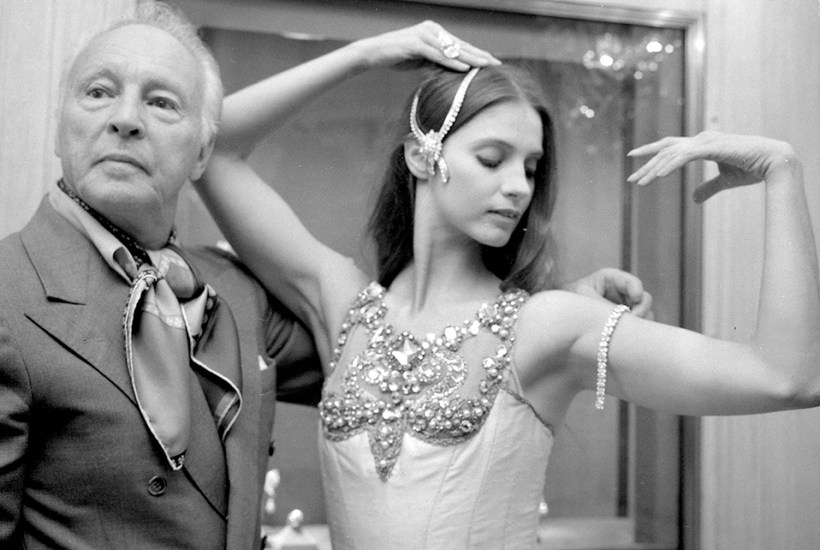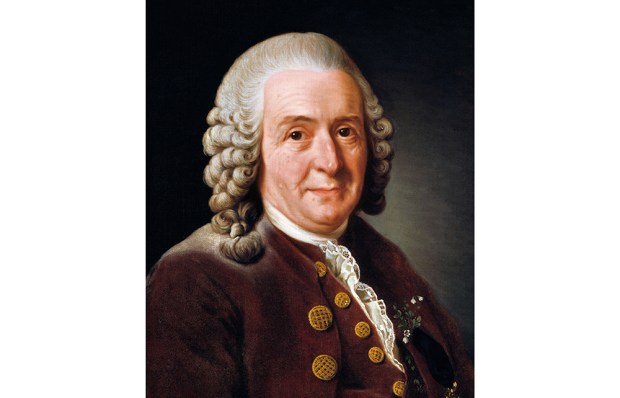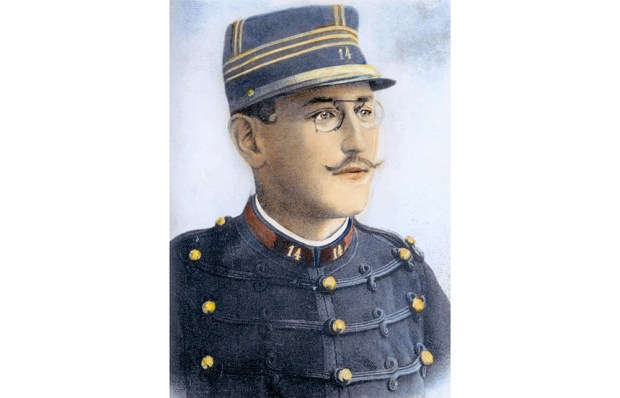Sex and dance were the twin themes of George Balanchine’s life. ‘I am a cloud in trousers,’ he said, using a phrase borrowed from the Russian poet Vladimir Mayakovsky. Jennifer Homans quotes the sentence early in her biography of the man who co-founded New York City Ballet:
What this suggested, and it was a central theme of his life, was that he felt like a man with two bodies and he lived in them both simultaneously, with at times heartbreaking personal consequences. The first was the trousers – the earthly man, delighted by sensual feelings and desires, who loved good food, fine wine, beautiful women… The cloud or breath was something else, and he saw it as the source of his gift.
This is also the central theme of her magnificent and gripping book, which walks a fine balance between explaining a life full of incident, of five marriages, other almost-wives, many affairs, disastrous betrayals and tragedy, and the wonder and spiritual abstraction of his work, which reshaped the image of ballet in the 20th century and beyond.
It’s all there in her action-packed, minutely researched Mr B, which traces the life of Georgi Melitonovich Balanchivadze, born illegitimately in St Petersburg in 1904 but later certified as having been the offspring of legally wedded parents, to his death in a New York hospital on 30 April 1983 from Creutzfeldt-Jacob disease – which may or may not have been caused by one of the injections he took to preserve his virility.
Almost every step Balanchine took along that road was extraordinary, full of odd chances and extreme circumstances. It began on the day his mother abandoned him at St Petersburg’s Imperial Theatre School, the feeder for the Mariinsky Ballet, when he unexpectedly landed a place instead of his sister – ‘They just left me there… like you take a dog and leave it,’ he recorded bitterly – and continued through the revolution, which broke down the walls of the ordered ballet world which became his home.
He left the post-revolutionary chaos and his family behind him to follow his progressive ideas of dance elsewhere. ‘He had the detachment of a survivor, an ability to sweep away feelings when they overwhelmed him and to start over – or keep going,’ Homans notes. By the time he met Diaghilev in Paris in 1924, Balanchine was considering pawning his only suit in order to feed himself and his band of dancers.
Diaghilev took him under his wing, and Balanchine created his first masterpiece, Apollo, to the music of Stravinsky, who became a guiding light. He established himself in Europe and survived TB in a Mont Blanc sanatorium and then made the crucial decision to take up Lincoln Kirstein’s offer to go on a ‘crazy American adventure’ and establish a ballet company in the United States.
It was an astonishing gamble, but it paid off, even in the teeth of constant financial instability. By 1963, with the building of the Lincoln Center, New York City Ballet had become America’s ‘de facto national ballet’, and what Balanchine had created changed the face of dance. Homans writes:
It is worth pausing for a moment over his achievement… It is astonishing that he was able to build from the ground up not only the ballets but the institutions of a new American art.
As a former dancer, as well as a distinguished critic and historian, Homans writes with vivid understanding about what Balanchine created, powered by his belief in dance as an expression of God. But she also explains how the works were always inspired by the dancers he was working with, who were often the women he loved.
Agon – ‘a culmination and a breakthrough… the moment Balanchine had become Balanchine’ – was his reaction in dance to the tragedy of his fifth wife, the beautiful Tanaquil Le Clercq. Theirs was a complicated relationship, since for much of it she was in love with Jerome Robbins, and Balanchine was in love with her best friend and fellow dancer Diana Adams, who starred in Agon. But the deepest shadow fell across it when, on a tour to Europe in 1956, Le Clercq contracted polio, confining this glorious, wild, uninhibited dancer to a wheelchair for the rest of her life. In an eerie prefiguring, the first dance Balanchine had ever made for her, when she was 16, saw her struck down by the same disease.
‘To make dance,’ Homans notes, Balanchine ‘needed to be physically attracted to a dancer and they had to be a great dancer… Loving a woman was his breath, his inspiration.’ She doesn’t shy away from the unsavoury aspects: the way the age gap between Balanchine and his lovers grew; his habit of embarking on a new relationship while still involved with someone else; his way of controlling women, both his lovers and his dancers, with unkind comments about their weight. His entire company was built around his god-like status among a group of women who sought to please him. Homans writes:
We could say sex is power, but that would only be an inch of the truth. The mile would be that the whole premise of the NYCB was that Balanchine’s love of women, of them, including the ones he didn’t love or court, promised to give to them their best possible selves in dancing, a seduction few refused.
The crisis came with Suzanne Farrell, who accepted the dancing side of that seduction but resisted his blandishments when he was desperately in love with her. His passion for her, ‘a grand obsession, an all-consuming love that fell on him with a force and urgency that astounded everyone around him’, nearly destroyed his life and his company. After she left in 1969, nothing was ever quite the same, though he went on making dances, and loving women.
Homans honours both the ballets and the personalities. She brings all the characters in Balanchine’s world to wonderful life, from the tortured Kirstein, to the ever practical Barbara Horgan, who served him faithfully as his personal assistant, to the generations of dancers he nurtured and inspired. Her descriptions of the ballets, both technical and full of evocative detail, are unlikely to be bettered.
Best of all, she conjures Mr B himself, the courteous man with his sleeves rolled up and his old-world manners, creating art at the centre of it all. He emerges as a lonely genius, existing to make dance:
His dances were body and spirit, or even spirit as body. And, therefore, ‘ballet is woman’ was woman as woman – the eternal feminine, but embodied, here and now.
Got something to add? Join the discussion and comment below.
Get 10 issues for just $10
Subscribe to The Spectator Australia today for the next 10 magazine issues, plus full online access, for just $10.
You might disagree with half of it, but you’ll enjoy reading all of it. Try your first month for free, then just $2 a week for the remainder of your first year.














Comments
Don't miss out
Join the conversation with other Spectator Australia readers. Subscribe to leave a comment.
SUBSCRIBEAlready a subscriber? Log in